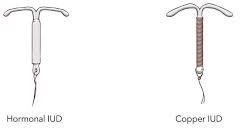A nurse is caring for a client who had a vaginal delivery 1 day ago. The nurse determines that the client's fundus is firm, located 2 fingerbreadths above the umbilicus, and deviated to the left. Which of the following actions should the nurse take first?
Notify the provider.
Administer a prescribed analgesic
Assist the client to empty her bladder.
Monitor perineal pads for clots.
The Correct Answer is C
A) Incorrect- While notifying the provider might be necessary, addressing bladder distention takes precedence in this scenario.
B) Incorrect- Administering an analgesic might be indicated for pain relief, but addressing bladder distention is the priority.
C) Correct - Assisting the client to empty her bladder is the first action to take. A full bladder can prevent the uterus from contracting properly and can lead to excessive bleeding.
D) Incorrect- Monitoring perineal pads for clots is important but not the first action to take when bladder distention is present.
Nursing Test Bank
Naxlex Comprehensive Predictor Exams
Related Questions
Correct Answer is C
Explanation
A) Incorrect- Cleansing the perineum with povidone-iodine is not relevant to the collection process.
B) Incorrect- The 24-hour collection should start with the first-morning urination, not with any random urination.
C) Correct - Recording the time on the collection container for any missed urine specimens is important for accurate measurement.
D) Incorrect- Stool should not be added to the urine collection container, but this is not the most important point to emphasize in this teaching.
Correct Answer is A
Explanation
A) Correct- Intrauterine devices (IUDs) have one of the lowest failure rates among contraceptive methods. They are highly effective at preventing pregnancy.
B) Incorrect- Diaphragms have a higher failure rate compared to IUDs.
C) Incorrect- Oral contraceptives have a failure rate slightly higher than IUDs due to the potential for missed doses.
D) Incorrect- Contraceptive sponges have a higher failure rate compared to IUDs.

Whether you are a student looking to ace your exams or a practicing nurse seeking to enhance your expertise , our nursing education contents will empower you with the confidence and competence to make a difference in the lives of patients and become a respected leader in the healthcare field.
Visit Naxlex, invest in your future and unlock endless possibilities with our unparalleled nursing education contents today
Report Wrong Answer on the Current Question
Do you disagree with the answer? If yes, what is your expected answer? Explain.
Kindly be descriptive with the issue you are facing.
